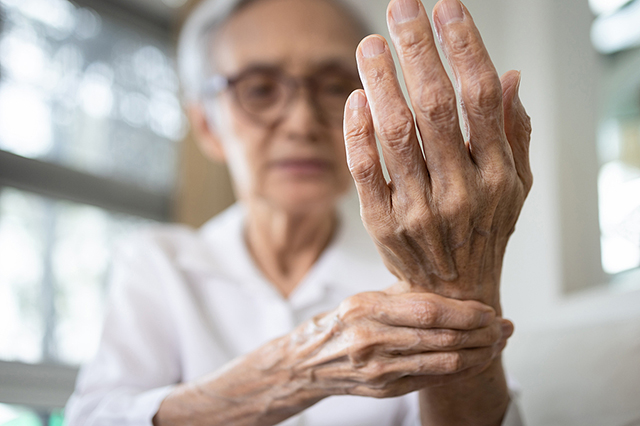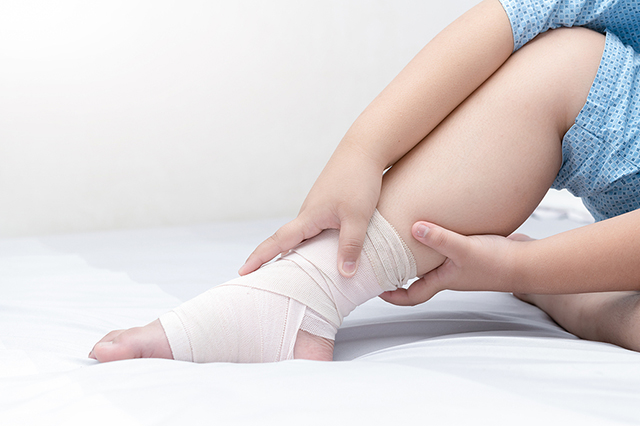
To arrange an appointment please contact your GP Practice requesting a referral to the Musculoskeletal (MSK) Clinic. An appointment will be arranged for you to see the GP. The GP will assess you and an appointment will be arranged if appropriate for you to be seen by this service. The table below details the locations for the Musculoskeletal (MSK) Triage Clinics and the days and times that they operate.
| DAY | LOCATION | clinician | |
|---|---|---|---|
| Mon | Elliott Chappell HC Bridge Group Practice | 9.5 hours a day | |
| Tue | Sutton Manor Surgery | 9 hours a day | |
| Wed | CHPL Southcoates Medical Centre | 10 hours a day | |
| Fri | Orchard Health Centre Bridge Group Practice | 9 hours a day |
Patients have the option to self-refer to MSK services without consulting their GP first. This streamlined process allows individuals to seek timely assessment and treatment directly, reducing wait times and promoting proactive management of their musculoskeletal issues.
You can refer yourself to Cora Health for physiotherapy if you:
To self refer click the Self Refer button to complete the interactive screening tool:
Patients are required to complete an on-line screening tool to assess the urgency and appropriateness of each case.
Musculo-skeletal (MSK) conditions affect many people and can range from minor injuries to long-term conditions. They can affect joints, muscles, bones and may include associated tissues such as nerves. Pain, stiffness, limitations on movement and disability can impact on a person's life and their independence. A third of the UK population are affected my an musculoskeletal (MSK) condition.
Patients have the option of self-referring to the Musculoskeletal (MSK) service for physiotherapy, where a triage process will assess their needs. However, they may also choose to consult their GP first if preferred. This dual pathway ensures patients have flexibility in accessing care, whether through direct referral or initial consultation with their GP.
General Practitioners (GPs) serve as the primary point of contact for patients with musculoskeletal (MSK) concerns. They conduct initial assessments, provide diagnoses, and offer basic treatments. GPs may refer patients to MSK services for further evaluation or specialised care based on the severity and complexity of the condition.
Collaboration between GPs, Musculoskeletal services, and other healthcare providers ensures seamless coordination of care. Clear communication channels facilitate timely referrals, shared decision-making, and holistic management of patients' musculoskeletal conditions. This collaborative approach optimises patient outcomes and enhances the overall quality of care.
This web page serves as a valuable resource hub for patients seeking information and support for musculoskeletal issues. It provides access to educational materials, self-help resources, and links to relevant services such as physiotherapy and pain management. Patients can also find guidance on self-referral procedures and learn about the role of GPs and Musculoskeletal services in their care journey.
Working Together

Bransholme Surgery
Bransholme Health Centre
Goodhart Road
Hull
HU7 4DW
Southcoates Surgery
225 Newbridge Road
HULL
HU9 2LR
Field View Surgery
840 Beverley Road
Hull
HU6 7HP
The Orchard Centre
210 Orchard Road
HULL
HU6 9BX
Elliott Chappell Health Centre
215 Hessle Road
HULL
HU3 4BB
The Quays
2nd Floor
Wilberforce Health Centre
6-10 Story Street
HULL
HU1 3SA
Riverside Medical Centre
The Octagon
Walker Street
HULL
HU3 2RA
East Park Practice
2nd Floor
Wilberforce Health Centre
6-10 Story Street
HULL
HU1 3SA
SUMMARY
Musculoskeletal issues have diverse origins. Repetitive strain injuries from activities like typing or sports lead to conditions such as tendonitis. Acute injuries from falls or sports trauma result in fractures, sprains, or strains. Age-related wear and tear, seen in osteoarthritis, deteriorates joint cartilage. Genetic factors increase susceptibility to rheumatoid arthritis or inheritable bone disorders. Systemic diseases like lupus or fibromyalgia also manifest with musculoskeletal symptoms, complicating diagnosis and treatment. Understanding these origins is essential for effective management.
Musculoskeletal issues profoundly affect daily life. Chronic pain limits mobility and hampers routine activities. Reduced independence in tasks like dressing or cooking diminishes quality of life.
Decreased productivity at work or home adds to the burden. Emotional distress from constant discomfort compounds the challenges posed by the condition. Addressing these impacts holistically is crucial for improving overall well-being and restoring functionality.
Accurate diagnosis is pivotal for effective management of musculoskeletal issues. Comprehensive assessments, including history, physical examination, and diagnostic tests such as imaging or blood work, aid in identifying the underlying cause. Precise diagnosis enables tailored treatment plans, ensuring appropriate interventions to alleviate symptoms and improve function. Collaboration between healthcare professionals ensures thorough evaluation, guiding patients towards optimal outcomes and improved quality of life
Treatment strategies for chronic pain are multifaceted, focusing on relieving symptoms and improving life quality.
Options include medications, physical therapy, psychotherapy, and alternative therapies such as acupuncture.
Personalised treatment plans often combine several approaches, tailored to the individual's specific condition, pain intensity, and personal preferences.
Self-management strategies encompass a spectrum of approaches aimed at empowering individuals to take control of their condition.
This includes engaging in appropriate exercises to strengthen muscles and improve joint function, adopting ergonomic practices to reduce strain, implementing stress management techniques to alleviate tension, and utilizing pain coping strategies to enhance daily functioning and quality of life. Consistency and adherence are key to achieving sustainable results.
Patients receive comprehensive support from a multidisciplinary healthcare team. Physicians, physiotherapists, occupational therapists, psychologists, and other specialists collaborate to provide holistic care. Open communication fosters trust and facilitates informed decision-making. Ongoing education empowers patients to actively participate in their treatment journey. Personalised attention ensures that care addresses not only physical symptoms but also emotional and social aspects, promoting overall well-being

Elbow pain, stemming from overuse or injury, presents symptoms like discomfort and limited mobility. Rest, ice, and gentle stretching are initial self-help measures. Referral for assessment is crucial for accurate diagnosis and potential treatments like physiotherapy or medication.
Elbow pain is a common complaint that can range from mild discomfort to severe agony, impacting a person's ability to perform everyday tasks. The elbow is a complex joint that enables the bending and straightening of the arm, as well as rotation of the forearm. Given its crucial role in various movements, any injury or condition affecting the elbow can lead to pain and limited mobility.
There are several potential causes of elbow pain, including overuse injuries, trauma, arthritis, and nerve compression. One of the most common culprits is lateral epicondylitis, commonly known as tennis elbow, which occurs due to repetitive gripping and wrist extension activities. This condition causes pain and tenderness on the outer aspect of the elbow and can be aggravated by tasks such as gripping objects, lifting weights, or playing sports.
Another prevalent cause of elbow pain is medial epicondylitis, also called golfer's elbow, characterized by pain and tenderness on the inner side of the elbow. This condition is often caused by repetitive wrist flexion activities, such as swinging a golf club or lifting heavy objects.
In addition to overuse injuries, acute trauma, such as falls or direct blows to the elbow, can result in fractures, sprains, or dislocations, leading to pain, swelling, and instability in the joint. Arthritis, including osteoarthritis and rheumatoid arthritis, can also affect the elbow, causing inflammation, stiffness, and pain with movement.
Furthermore, nerve compression syndromes, such as cubital tunnel syndrome, can cause elbow pain, numbness, and tingling in the hand and fingers. This condition occurs when the ulnar nerve, which runs through the cubital tunnel on the inner side of the elbow, becomes compressed or irritated due to prolonged pressure or repetitive bending of the elbow.
The symptoms of elbow pain can vary according to the underlying cause and severity of the condition. Common symptoms include:
Seeking medical evaluation is crucial for proper diagnosis and treatment of elbow pain. A healthcare professional will perform a comprehensive examination, review the individual's medical history, and may order diagnostic tests such as X-rays, MRI scans, or nerve conduction studies to determine the underlying cause of the pain.
Treatment for elbow pain will depend on the specific diagnosis and may include a combination of conservative measures and interventions. Common treatment options may include:
In conclusion, elbow pain is a common and often debilitating condition that can significantly impact daily functioning and quality of life. By understanding the causes, symptoms, and treatment options for elbow pain, individuals can take proactive steps to manage their symptoms and improve their elbow health. Seeking prompt medical attention and following a comprehensive treatment plan are essential for effectively managing elbow pain and restoring optimal function and mobility.

Arthritis causes joint inflammation and stiffness, leading to pain and reduced mobility. Self-help measures include gentle exercise and joint protection. Referral for assessment is vital for personalised treatment plans involving medication, physical therapy, or lifestyle modifications.
Arthritis is a term used to describe a group of over 100 rheumatic diseases and conditions that affect the joints, causing pain, inflammation, stiffness, and decreased range of motion. This chronic condition can affect people of all ages, genders, and ethnicities, although it is more common among older adults. Arthritis is one of the leading causes of disability worldwide, affecting millions of individuals and impacting their quality of life.
The most prevalent types of arthritis include osteoarthritis (OA) and rheumatoid arthritis (RA), each with its unique characteristics, causes, and treatments. Osteoarthritis, often referred to as "wear and tear" arthritis, occurs when the protective cartilage that cushions the ends of the bones wears down over time. This degenerative process leads to pain, stiffness, and swelling in the affected joints, most commonly in the hands, knees, hips, and spine. Risk factors for osteoarthritis include age, genetics, obesity, joint injuries, and repetitive stress on the joints.
Rheumatoid arthritis, on the other hand, is an autoimmune disorder in which the body's immune system mistakenly attacks the synovium, the lining of the membranes that surround the joints. This chronic inflammation can eventually lead to joint damage, deformity, and systemic complications affecting other organs and tissues. Rheumatoid arthritis typically affects multiple joints symmetrically, such as the hands, wrists, elbows, knees, and feet, and is characterized by periods of exacerbation (flare-ups) and remission.
In addition to osteoarthritis and rheumatoid arthritis, other types of arthritis include psoriatic arthritis, ankylosing spondylitis, gout, lupus arthritis, and juvenile idiopathic arthritis, among others. Each type of arthritis has its unique set of symptoms, causes, and treatment approaches, requiring a personalized approach to management.
The symptoms of arthritis can vary depending on the type and severity of the condition but often include:
Diagnosis of arthritis typically involves a thorough medical history, physical examination, and diagnostic tests such as X-rays, blood tests, MRI scans, or joint aspiration to assess inflammation and rule out other conditions.
Treatment for arthritis aims to relieve pain, reduce inflammation, improve joint function, and prevent further damage. Depending on the type and severity of arthritis, treatment options may include:
In addition to medical treatment, self-care strategies such as heat or cold therapy, rest, stress management techniques, and complementary therapies like acupuncture or massage may help alleviate arthritis symptoms and improve overall well-being.
Living with arthritis can be challenging, but with proper management and support, individuals can minimize pain, maintain mobility, and lead fulfilling lives. Engaging in regular physical activity, maintaining a healthy diet, managing stress, and staying informed about arthritis management strategies are essential steps in effectively coping with this chronic condition. Moreover, seeking support from healthcare professionals, support groups, and loved ones can provide valuable resources and encouragement throughout the journey of living with arthritis.

Back and neck pain, often caused by poor posture or muscle strain, results in discomfort and limited movement. Self-care strategies include gentle stretching and ergonomic adjustments. Referral for assessment aids in personalised treatment plans, incorporating physiotherapy or medication as needed.
Neck and back pain are among the most common musculoskeletal complaints, affecting millions of people worldwide. These types of pain can be debilitating, impacting daily activities, work productivity, and overall quality of life. Understanding the causes, symptoms, and treatment options for neck and back pain is crucial for effective management and relief.
Neck pain, also known as cervical pain, can be caused by various factors, including muscle strain, poor posture, injury, arthritis, or degenerative disc disease. Spending long hours sitting at a desk, hunching over electronic devices, or sleeping in an awkward position can strain the muscles and ligaments in the neck, leading to stiffness, discomfort, and limited range of motion. In some cases, underlying medical conditions such as cervical spondylosis or herniated discs can contribute to neck pain, resulting in radiating pain, numbness, or weakness in the arms or hands.
Similarly, back pain, whether it affects the upper (thoracic), middle (lumbar), or lower (sacral) regions of the spine, can be caused by a multitude of factors. Common causes of back pain include muscle strains, ligament sprains, spinal stenosis, herniated discs, osteoarthritis, or degenerative disc disease. Poor posture, lifting heavy objects incorrectly, obesity, and sedentary lifestyle habits can exacerbate back pain and increase the risk of developing chronic conditions.
The symptoms of neck and back pain can vary depending on the underlying cause and severity of the condition but often include:
Seeking medical evaluation is essential for proper diagnosis and treatment of neck and back pain. A healthcare professional will conduct a thorough physical examination, review the individual's medical history, and may order diagnostic tests such as X-rays, MRI scans, or CT scans to determine the underlying cause of the pain.
Treatment for neck and back pain will depend on the specific diagnosis and may include a combination of conservative measures and interventions. Common treatment options may include:
In addition to medical treatment, self-care strategies such as applying ice or heat packs, practicing relaxation techniques, maintaining a healthy weight, and engaging in regular exercise can help alleviate neck and back pain and prevent future episodes. Moreover, adopting proper body mechanics, including lifting objects with the legs rather than the back, avoiding prolonged sitting or standing, and taking frequent breaks to stretch and move around, can help reduce the risk of developing neck and back pain.
In conclusion, neck and back pain are common and often debilitating conditions that can significantly impact daily functioning and quality of life. By understanding the causes, symptoms, and treatment options for neck and back pain, individuals can take proactive steps to manage their symptoms, improve their posture, and prevent future episodes. Seeking prompt medical attention, maintaining a healthy lifestyle, and incorporating self-care strategies into daily routines are essential components of an effective treatment plan for neck and back pain.

Following a fracture, management focuses on ensuring proper healing and restoring function. This may involve immobilisation through casting or splinting, pain management, physical therapy, and gradual return to activities under medical supervision to prevent complications and promote recovery.
Fractures, commonly known as broken bones, are a prevalent injury affecting people of all ages and backgrounds. They occur when the force applied to a bone is greater than the bone can withstand, resulting in a partial or complete break in the bone structure. Fractures can vary in severity, location, and complexity, ranging from simple hairline cracks to complex fractures that pierce the skin and cause significant tissue damage.
There are several types of fractures, each with its own characteristics and implications for treatment:
The symptoms of a fracture may vary depending on the type and location of the injury but often include:
Seeking prompt medical attention is crucial for proper diagnosis and treatment of fractures. A healthcare professional will conduct a physical examination, review the individual's medical history, and order diagnostic tests such as X-rays, CT scans, or MRI scans to assess the extent of the injury and determine the most appropriate course of action.
Treatment for fractures may vary depending on the severity and complexity of the injury but typically involves:
In addition to medical treatment, rehabilitation and physical therapy exercises are essential for restoring strength, flexibility, and range of motion in the affected limb or joint. Depending on the type and location of the fracture, recovery may take several weeks to months, and adherence to the prescribed treatment plan is crucial for optimal outcomes.

Foot and ankle pain are common complaints that can significantly impair mobility and quality of life. These types of pain can stem from various causes, including injury, overuse, structural abnormalities, or underlying medical conditions. Understanding the potential causes, symptoms, and treatment options for foot and ankle pain is essential for effective management and relief.
Foot and ankle pain are common complaints that can significantly impair mobility and quality of life. These types of pain can stem from various causes, including injury, overuse, structural abnormalities, or underlying medical conditions. Understanding the potential causes, symptoms, and treatment options for foot and ankle pain is essential for effective management and relief.
One of the most prevalent causes of foot and ankle pain is musculoskeletal injury, such as sprains, strains, or fractures. Ankle sprains occur when the ligaments that support the ankle joint are stretched or torn, often due to sudden twisting or rolling movements. These injuries can cause pain, swelling, bruising, and instability in the affected ankle, making it difficult to bear weight or walk comfortably. Similarly, fractures of the foot or ankle bones can result from trauma or repetitive stress, leading to localized pain, swelling, and difficulty moving the affected limb.
Another common cause of foot and ankle pain is overuse or repetitive stress injuries, such as plantar fasciitis or Achilles tendinitis. Plantar fasciitis occurs when the thick band of tissue (plantar fascia) that runs along the bottom of the foot becomes inflamed, causing heel pain and stiffness, particularly with the first steps in the morning or after prolonged periods of rest. Achilles tendinitis involves inflammation of the Achilles tendon, which connects the calf muscles to the heel bone, resulting in pain and stiffness in the back of the ankle, particularly during physical activity.
Structural abnormalities, such as flat feet (pes planus), high arches (pes cavus), or bunions, can also contribute to foot and ankle pain. These conditions can alter the biomechanics of the foot and ankle, leading to abnormal stress on the bones, ligaments, and tendons, and resulting in pain, swelling, and instability. Additionally, underlying medical conditions like arthritis, gout, neuropathy, or nerve compression syndromes can cause chronic foot and ankle pain, which may require specialised evaluation and treatment.
The symptoms of foot and ankle pain can vary depending on the underlying cause and severity of the condition but often include:
Seeking medical evaluation is essential for proper diagnosis and treatment of foot and ankle pain. A healthcare professional will conduct a physical examination, review the individual's medical history, and may order diagnostic tests such as X-rays, MRI scans, or ultrasound imaging to determine the underlying cause of the pain.
Treatment for foot and ankle pain will depend on the specific diagnosis and may include a combination of conservative measures and interventions. Common treatment options may include:
In cases of severe or persistent foot and ankle pain, surgical intervention may be necessary to repair ligament tears, realign bones, or remove damaged tissue. Surgical procedures may include arthroscopic surgery, ligament reconstruction, tendon repair, or joint fusion, depending on the specific condition and severity of the injury.
In addition to medical treatment, self-care strategies such as applying ice or heat packs, elevating the affected limb, and wearing supportive footwear with proper arch support and cushioning can help alleviate foot and ankle pain and promote healing. Stretching exercises, massage therapy, and low-impact activities like swimming or cycling may also be beneficial for maintaining mobility and preventing further injury.
Preventing foot and ankle pain involves practicing proper foot hygiene, wearing appropriate footwear for the activity, maintaining a healthy weight, and avoiding excessive stress or strain on the feet and ankles. Warm-up exercises, stretching routines, and gradual progression of activity intensity can help reduce the risk of overuse injuries and improve overall foot and ankle health.
In conclusion, foot and ankle pain are common and often debilitating conditions that can significantly impact mobility and quality of life. By understanding the potential causes, symptoms, and treatment options for foot and ankle pain, individuals can take proactive steps to manage their symptoms, prevent further injury, and maintain optimal foot and ankle health. Seeking prompt medical attention, adhering to the prescribed treatment plan, and incorporating self-care strategies into daily routines are essential for effectively managing foot and ankle pain and promoting long-term recovery and function.

Hand pain is a common complaint that can affect individuals of all ages and lifestyles. Whether it's a dull ache, sharp stabbing sensation, or persistent discomfort, hand pain can significantly impact daily activities and overall quality of life. Understanding the causes, symptoms, and potential treatments for hand pain is essential for effectively managing this condition.
There are numerous factors that can contribute to hand pain, ranging from overuse injuries to chronic conditions. One of the most prevalent causes of hand pain is repetitive strain injury (RSI), often associated with activities such as typing, writing, or playing musical instruments. These repetitive motions can lead to inflammation of the tendons and joints in the hand, resulting in pain, stiffness, and reduced range of motion.
Another common cause of hand pain is arthritis, a condition characterized by inflammation of the joints. Osteoarthritis, the most common form of arthritis, occurs when the protective cartilage that cushions the ends of the bones wears down over time, leading to pain, swelling, and stiffness in the affected joints. Rheumatoid arthritis, an autoimmune disorder, can also affect the hands, causing inflammation, deformity, and severe pain.
In addition to RSI and arthritis, other potential causes of hand pain include fractures, sprains, nerve compression (such as carpal tunnel syndrome), infections, and underlying medical conditions like diabetes or thyroid disorders. Identifying the underlying cause of hand pain is crucial for determining the most appropriate treatment approach.
The symptoms of hand pain can vary depending on the underlying cause and severity of the condition. Common symptoms may include:
For individuals experiencing hand pain, seeking medical evaluation is essential for proper diagnosis and treatment. A healthcare professional will conduct a thorough physical examination, review the individual's medical history, and may order diagnostic tests such as X-rays, MRI scans, or blood tests to determine the underlying cause of the pain.
Treatment for hand pain will depend on the specific diagnosis and may include a combination of conservative measures and interventions. Common treatment options may include:
In addition to medical treatment, self-care strategies such as applying ice packs, practicing good ergonomics, and incorporating stress-reducing activities like yoga or meditation into daily routines can help alleviate hand pain and prevent further injury.
Overall, hand pain is a common and often debilitating condition that can significantly impact daily functioning and quality of life. By understanding the causes, symptoms, and treatment options for hand pain, individuals can take proactive steps to manage their symptoms and improve their hand health. Seeking prompt medical attention and adopting appropriate self-care measures are essential components of an effective treatment plan for hand pain.

Hip pain is a common complaint that can have a significant impact on mobility and quality of life. The hip joint is one of the largest weight-bearing joints in the body, responsible for supporting the upper body's weight during activities such as walking, running, and standing. Hip pain can arise from various causes, including injury, overuse, degenerative conditions, or underlying medical issues. Understanding the potential causes, symptoms, and treatment options for hip pain is essential for effective management and relief.
One of the most common causes of hip pain is osteoarthritis, a degenerative joint disease characterized by the gradual breakdown of cartilage in the hip joint. As the cartilage wears away, the bones rub against each other, leading to pain, stiffness, and decreased range of motion in the hip. Osteoarthritis is more common in older adults but can also occur as a result of joint injury, obesity, or genetic factors.
Another prevalent cause of hip pain is bursitis, which involves inflammation of the bursae, small fluid-filled sacs that cushion the hip joint and reduce friction between the bones, tendons, and muscles. Bursitis can result from overuse, repetitive motions, or direct trauma to the hip, leading to pain, swelling, and tenderness in the affected area.
In addition to osteoarthritis and bursitis, other potential causes of hip pain include:
The symptoms of hip pain can vary depending on the underlying cause and severity of the condition but often include:
Seeking medical evaluation is essential for proper diagnosis and treatment of hip pain. A healthcare professional will conduct a physical examination, review the individual's medical history, and may order diagnostic tests such as X-rays, MRI scans, or blood tests to determine the underlying cause of the pain.
Treatment for hip pain will depend on the specific diagnosis and may include a combination of conservative measures and interventions. Common treatment options may include:
Preventing hip pain involves practicing safety measures such as wearing appropriate footwear, using proper lifting techniques, maintaining good posture, and avoiding activities that put excessive stress on the hip joint. Strengthening exercises targeting the muscles around the hip, core, and lower body can help improve stability and reduce the risk of injury.
In conclusion, hip pain is a common and often debilitating condition that can significantly impact mobility and quality of life. By understanding the potential causes, symptoms, and treatment options for hip pain, individuals can take proactive steps to manage their symptoms, prevent further injury, and maintain optimal hip health. Seeking prompt medical attention, adhering to the prescribed treatment plan, and incorporating self-care strategies into daily routines are essential for effectively managing hip pain and promoting long-term recovery and function.

Joint pain is a prevalent condition that can affect people of all ages and backgrounds. It refers to discomfort, soreness, or inflammation in one or more joints, which are the connections between bones that allow for movement. Joint pain can range from mild to severe and can be acute, lasting for a short period, or chronic, persisting for weeks, months, or even years. Understanding the causes, symptoms, and treatment options for joint pain is essential for effectively managing this condition and improving quality of life.
There are numerous potential causes of joint pain, including:
The symptoms of joint pain can vary depending on the underlying cause and severity of the condition but often include:
Seeking medical evaluation is essential for proper diagnosis and treatment of joint pain. A healthcare professional will conduct a physical examination, review the individual's medical history, and may order diagnostic tests such as X-rays, MRI scans, or blood tests to determine the underlying cause of the pain.
Treatment for joint pain will depend on the specific diagnosis and may include a combination of conservative measures and interventions. Common treatment options may include:
In addition to medical treatment, self-care strategies such as applying ice or heat packs, practicing relaxation techniques, and incorporating low-impact exercises like swimming or cycling into daily routines can help alleviate joint pain and improve overall well-being.
Preventing joint pain involves maintaining a healthy lifestyle with regular exercise, proper nutrition, and weight management. Avoiding activities that put excessive stress on the joints, using proper body mechanics, and wearing supportive footwear can also help reduce the risk of joint injury and pain.
In conclusion, joint pain is a common and often debilitating condition that can significantly impact mobility and quality of life. By understanding the potential causes, symptoms, and treatment options for joint pain, individuals can take proactive steps to manage their symptoms, prevent further injury, and maintain optimal joint health. Seeking prompt medical attention, adhering to the prescribed treatment plan, and incorporating self-care strategies into daily routines are essential for effectively managing joint pain and promoting long-term recovery and function.

Knee pain is a prevalent issue that can affect individuals of all ages, from athletes to the elderly. It can result from various causes, ranging from overuse injuries to underlying medical conditions. Knee pain can range from mild discomfort to severe agony, and it can significantly impact an individual's ability to perform daily activities. Understanding the causes, symptoms, and treatment options for knee pain is essential for effectively managing this condition and improving quality of life.
One of the most common causes of knee pain is osteoarthritis, a degenerative joint disease that occurs when the protective cartilage that cushions the ends of the bones in the knee wears down over time. This leads to pain, swelling, stiffness, and decreased range of motion in the affected knee. Osteoarthritis is more common in older adults but can also occur as a result of joint injury, obesity, or genetic factors.
Another prevalent cause of knee pain is ligament injuries, such as anterior cruciate ligament (ACL) tears or medial collateral ligament (MCL) sprains. These injuries often occur during sports or activities that involve sudden stops, changes in direction, or direct blows to the knee. Ligament injuries can cause pain, swelling, instability, and difficulty bearing weight on the affected knee.
In addition to osteoarthritis and ligament injuries, other potential causes of knee pain include:
The symptoms of knee pain can vary depending on the underlying cause and severity of the condition but often include:
Seeking medical evaluation is essential for proper diagnosis and treatment of knee pain. A healthcare professional will conduct a physical examination, review the individual's medical history, and may order diagnostic tests such as X-rays, MRI scans, or blood tests to determine the underlying cause of the pain.
Treatment for knee pain will depend on the specific diagnosis and may include a combination of conservative measures and interventions. Common treatment options may include:
In addition to medical treatment, self-care strategies such as applying ice or heat packs, practicing proper body mechanics, and incorporating low-impact exercises like swimming or cycling into daily routines can help alleviate knee pain and promote healing. Stretching exercises, yoga, and tai chi may also be beneficial for improving knee flexibility and reducing stiffness.
Preventing knee pain involves maintaining a healthy lifestyle with regular exercise, proper nutrition, and weight management. Avoiding activities that put excessive stress on the knees, using proper footwear, and practicing good posture and body mechanics can also help reduce the risk of knee injury and pain.
In conclusion, knee pain is a common and often debilitating condition that can significantly impact mobility and quality of life. By understanding the potential causes, symptoms, and treatment options for knee pain, individuals can take proactive steps to manage their symptoms, prevent further injury, and maintain optimal knee health. Seeking prompt medical attention, adhering to the prescribed treatment plan, and incorporating self-care strategies into daily routines are essential for effectively managing knee pain and promoting long-term recovery and function.
Shoulder pain is a common complaint that can significantly affect an individual's ability to perform daily activities and impact their overall quality of life. The shoulder is a complex and highly mobile joint composed of several bones, muscles, tendons, and ligaments, allowing for a wide range of motion. However, this complexity also makes the shoulder susceptible to various injuries and conditions that can lead to pain and discomfort.
There are several potential causes of shoulder pain, including:
The symptoms of shoulder pain can vary depending on the underlying cause and severity of the condition but often include:
Seeking medical evaluation is essential for proper diagnosis and treatment of shoulder pain. A healthcare professional will conduct a physical examination, review the individual's medical history, and may order diagnostic tests such as X-rays, MRI scans, or ultrasound imaging to determine the underlying cause of the pain.
Treatment for shoulder pain will depend on the specific diagnosis and may include a combination of conservative measures and interventions. Common treatment options may include:
In addition to medical treatment, self-care strategies such as applying ice or heat packs, practicing proper body mechanics, and incorporating stretching and strengthening exercises into daily routines can help alleviate shoulder pain and promote healing. Posture correction, ergonomic modifications, and avoidance of activities that exacerbate symptoms can also help prevent further injury and improve shoulder health.
In conclusion, shoulder pain is a common and often debilitating condition that can significantly impact mobility and quality of life. By understanding the potential causes, symptoms, and treatment options for shoulder pain, individuals can take proactive steps to manage their symptoms, prevent further injury, and maintain optimal shoulder health. Seeking prompt medical attention, adhering to the prescribed treatment plan, and incorporating self-care strategies into daily routines are essential for effectively managing shoulder pain and promoting long-term recovery and function.
Osteoporosis is a progressive bone disease characterized by a decrease in bone density and quality, leading to an increased risk of fractures. The word osteoporosis literally means "porous bones," and the condition is often referred to as the "silent disease" because it typically progresses without symptoms until a fracture occurs. Osteoporosis can affect individuals of any age and gender but is more commonly seen in older adults, particularly postmenopausal women.
Bone is a living tissue that undergoes constant remodeling, with old bone being replaced by new bone. Osteoporosis occurs when the rate of bone resorption (breakdown) exceeds the rate of bone formation, resulting in a net loss of bone mass and strength over time. This weakening of the bones makes them more susceptible to fractures, particularly in the spine, hips, wrists, and other weight-bearing bones.
There are several risk factors associated with osteoporosis, including:
The symptoms of osteoporosis are often subtle and may not be noticeable until a fracture occurs. Common signs and symptoms of osteoporosis may include:
Diagnosis of osteoporosis typically involves a combination of medical history, physical examination, and diagnostic tests, such as bone density scans (dual-energy X-ray absorptiometry or DEXA scans) to measure bone mineral density (BMD) and assess fracture risk.
Treatment for osteoporosis aims to slow the progression of bone loss, reduce fracture risk, and manage symptoms. Common treatment options may include:
In addition to medical treatment, individuals with osteoporosis may benefit from physical therapy to improve posture, strength, and balance, as well as assistive devices such as braces or orthotics to support weakened bones and reduce the risk of falls.
Preventing osteoporosis involves adopting healthy lifestyle habits early in life, such as regular exercise, maintaining a healthy weight, quitting smoking, limiting alcohol consumption, and ensuring an adequate intake of calcium and vitamin D through diet and/or supplements. Early detection and treatment of osteoporosis can also help reduce the risk of fractures and improve long-term outcomes.
In conclusion, osteoporosis is a common and serious bone disease characterised by decreased bone density and increased fracture risk. Although osteoporosis is often asymptomatic until a fracture occurs, early detection and treatment are essential for preventing complications and maintaining bone health. By understanding the risk factors, symptoms, and treatment options for osteoporosis, individuals can take proactive steps to reduce their risk and preserve bone health throughout life.

Exercise plays a crucial role in managing musculoskeletal conditions, which encompass a wide range of disorders affecting the bones, muscles, joints, tendons, and ligaments. While it may seem counterintuitive to exercise when experiencing pain or discomfort, physical activity can actually be an effective tool for relieving symptoms, improving function, and preventing further complications associated with musculoskeletal conditions.
There are several ways in which exercise can benefit individuals with musculoskeletal conditions:
It's essential to tailor exercise programs to individual needs, taking into account factors such as the type and severity of the musculoskeletal condition, current fitness level, age, and overall health status. Consultation with a healthcare professional or physical therapist is recommended before starting an exercise program, particularly for individuals with pre-existing medical conditions or significant pain.
Examples of exercise modalities commonly recommended for individuals with musculoskeletal conditions include:
It's essential to start slowly and gradually progress the intensity, duration, and frequency of exercise as tolerated. Listening to the body and paying attention to any signs of pain, discomfort, or fatigue is important, and modifications may be necessary to accommodate individual needs and limitations.
In conclusion, exercise is a valuable and effective tool for managing musculoskeletal conditions, offering numerous physical and psychological benefits. Incorporating a well-rounded exercise program that includes strength training, flexibility exercises, balance and coordination activities, and aerobic conditioning can help improve symptoms, enhance function, and promote overall health and well-being. Working with healthcare professionals or physical therapists to develop a personalized exercise plan is key to safely and effectively managing musculoskeletal conditions and optimising quality of life.